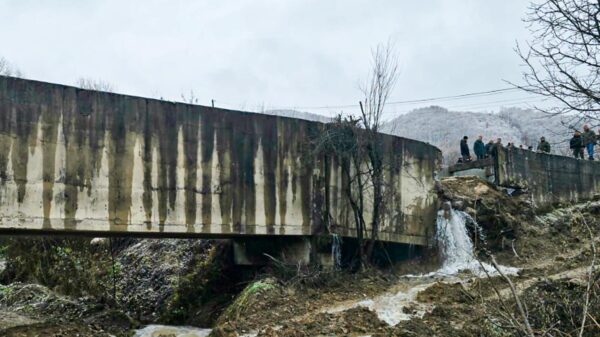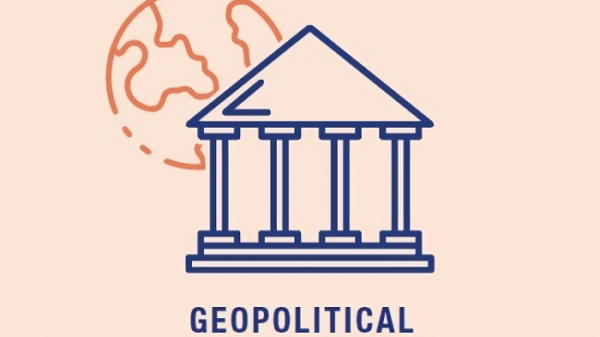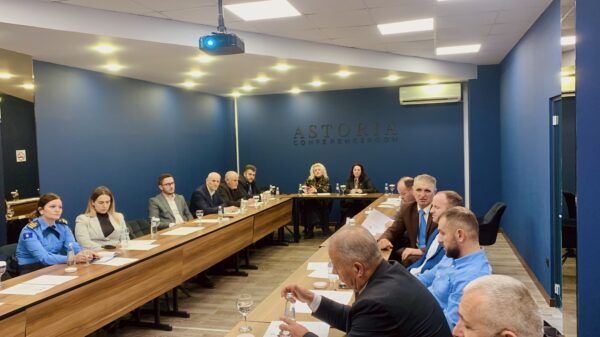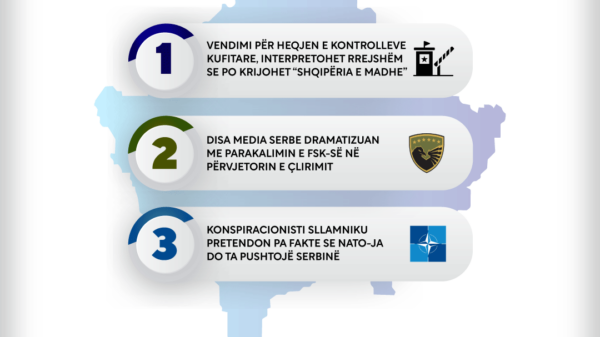While progress is something of a mixed bag, there are definitely improvements over the last few years. With the opening of EU chapters combined with growing awareness of the need to take better care of our planet, hopes are high that Albania will do its bit.
Albania is a country of many contradictions, and one of these relates to its approach to climate change, sustainability, and green policies. On the one hand, the country runs almost entirely on hydropower energy and uses practically zero gas, but has no national or local recycling programmes. It has the lowest car ownership rate in Europe but leaves people reliant on woodburning or electricity-guzzling AC instead of providing heat pump subsidies.
In big cities, there is little awareness of reducing the use of plastics and general waste, while in rural communities, people struggle to make ends meet and live farm-to-table because they have no other option. As EU membership looms, the country is working hard to implement some measures to improve its green credentials, but there is still work to be done.
Makinat elektrike
The government of Albania has initiated a tender to establish electronic charging stations across the country as part of their National Action Plan for Energy and Climate. This initiative aims to reduce direct and indirect CO2 emissions and align with the EU acquis.
While the capital city of Tirana already has more than 20 such stations, they are scarce in other regions, particularly in popular tourist destinations. Municipal vehicles, certain buses, police cars, and numerous private taxis operate on electricity. However, adopting electric vehicles among the general public has been relatively slow.
The charging stations will be strategically located in Saranda, Gjirokaster, Himara, Vlore, Durres, Velipoje, Shkoder, Korce, and at land border points. This extensive distribution will ensure easy access to charging points for tourists throughout the country. Albania, increasingly focusing on tourism as a significant contributor to its GDP, aims to install 200 to 300 charging stations by 2025.
According to the National Action Plan for Energy and Climate concerning the transportation sector, Albania is obligated to reduce the consumption of fossil fuels and mitigate the associated environmental pollution. The Albanian government is committed to achieving these objectives and is collaborating with international institutions and the government to secure the necessary funds for the sector's development.
The use of electric cars remains limited among the general population for a couple of reasons. Firstly, Albania has the lowest car ownership rate in Europe, with only one in five citizens owning a vehicle, as per official data from the end of 2021. Moreover, most of the 539,000 vehicles in circulation are concentrated in Tirana, leading to traffic congestion and high pollution levels.
Secondly, the cost of electric vehicles is prohibitive for many citizens. The average price of a battery-only electric vehicle is estimated at €55,821, whereas the average yearly income of an Albanian citizen is approximately €7,000.
In an effort to encourage greater adoption, the government has decided to reimburse registration fees, including costs for ownership documents, licenses, and plates. Nevertheless, electric cars constitute only 0.35% of vehicles in the country, with the majority being used for commercial purposes.
Transporti publik
When it comes to public transport, efforts are being made but the situation is far from on a par with other European countries. Public transport in Albania is mainly limited to bus at an urban and intercity level. Within cities, a network of busses- some hybrid, some running on fossil fuels- travel along the main arterial roads, on a schedule, albeit a slightly haphazard one. Intercity transport is offered by private busses and furgons- minibuses that travel on a loose schedule and usually depart from their origin when full. There are also several private lines that offer travel to neighbouring countries and those further afield such as Germany, Switzerland and the UK.
During the almost fifty years of communism, train lines ran throughout the country, but since the transition to democracy, they fell into disrepair. One line currently functions, slowly and irregularly, between Tirana and Shkoder in the north. But plans are afoot to bring Albania’s railways back to life.
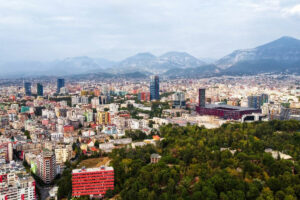
Source: freepik.com
Work is starting on the line between Tirana and the coastal city of Durres,soon to be home to a multi-billion euro port funded by Arab investors. The link will eventually stretch to North Macedonia and to the Bulgarian port of Varna if construction work ever gets off the ground.
As for intercity rail transport, much of the debate centres on whether the investment needed would be worth it considering the population of 2.7 million, with most living in the capital. Supporters of the project believe that having efficient rail links across the country will help solve the issue of depopulation in more rural areas, allowing quick transport to places where jobs are more readily available.
There have been several plans for underground metros and even whispers of a monorail, but these are unlikely to become reality.
Korsitë e biçikletave
Over the past decade, the use of bicycles in Albania, particularly in the capital city of Tirana, has witnessed a significant surge. With growing concerns about environmental sustainability, traffic congestion, and the need for healthier transportation alternatives, the construction of bike lanes in Tirana has played a crucial role in promoting cycling as a viable mode of transportation.
Ten years ago, Tirana had limited infrastructure for cyclists, with few dedicated bike lanes or provisions for safe cycling. However, recognizing the importance of sustainable transportation, the Albanian government, along with local authorities, initiated efforts to develop a comprehensive network of bike lanes throughout the city.
The construction of bike lanes in Tirana has been a gradual process, starting with small pilot projects and gradually expanding to cover more areas. Initially, bike lanes were introduced in the city centre and main arterial roads, where the demand for cycling was relatively high. As the success and popularity of these initial bike lanes became evident, the authorities expanded their efforts to other parts of the city.
Furthermore, some of the older bike lanes, which featured holes, sideways slopes, and dead ends, have been reconstructed as two-way lanes with proper surfaces and barriers separating them from cars.
There were also attempts at bike-sharing schemes, but these fell largely flat as people simply stole, abandoned, or broke the bikes. But now, the uptick in cyclists is notable throughout the city, although challenges with safety remain. Car drivers generally have a lack of awareness and acknowledgement of cyclists, while those on bikes, and scooters, do not wear helmets, use lights or signals, bells, or any other kind of safety measures.
However, the construction of bike lanes in Tirana has been accompanied by various supportive measures. These include improving road safety infrastructure, such as traffic lights and signage, to improve safety, running awareness campaigns and educational programs and creating a cycling academy for children at the city’s lake park.
Hapësirat (mjediset) e gjelbra
Tirana has experienced a construction boom in recent years, with society divided on shrinking green spaces, demolishing historic buildings, and the need for more housing for its growing population. But in the first quarter of 2023, the number of construction permits fell for the first time since 2018.
According to official statistics from INSTAT, permits issued during the first quarter of the year totalled 199,580 square metres, a 75% decrease on the previous year. In addition to a decrease in the capital, the figures fell across the whole country by almost 50% after reaching a record level last year.
While the tide may be turning, the cost of property in the capital has soared, pushing many locals out of the housing market. Property is now selling for over EUR 5000 per square metre in the centre, with little under EUR 1000 per square metre available anywhere else.
But another big issue caused by the construction boom, asides from the noise and dust pollution, is that of shrinking green spaces. In 2020, some 27% of the city was designated as green space, but this number is falling while the authorities struggle to keep up with their promises. 27% e qytetit u përcaktua si hapësirë e gjelbër, por ky numër po bie ndërsa autoritetet luftojnë për të mbajtur premtimet e tyre.
The Mayor of Tirana, Erion Veliaj, promised in 2016 to plant 2 million trees in Tirana by 2030 under the so-called Orbital Forest initiative, which would comprise 14,000 hectares spanning two green rings of the city. However, multiple media have debunked his plans as unfeasible and bordered on misinformation.
To meet the target, 120,000 trees would need to be planted yearly, but only between December and March when conditions are appropriate. However, between 2017 and 2022, only 115,857 trees were planted, meaning the project is significantly behind schedule. To get back on track, the Municipality would have to plant over 18,471 trees a month, or 614 a day.
The Municipality then claimed that it had a lack of a specific budget for the project, which led to the delay.
But it is not just in Tirana that green spaces are suffering. Every year, more than 20,000 hectares of forest disappear due to logging - both legal and illegal and forest fires, exacerbated due to longer, hotter summers. 20,000 hektarë pyje zhduken për shkak të prerjeve – të ligjshme dhe të paligjshme dhe zjarret pyjore, të përkeqësuara për shkak të verës më të gjatë dhe më të nxehtë.
While progress is something of a mixed bag, there are definitely improvements over the last few years. With the opening of EU chapters combined with growing awareness of the need to take better care of our planet, hopes are high that Albania will do its bit.






















